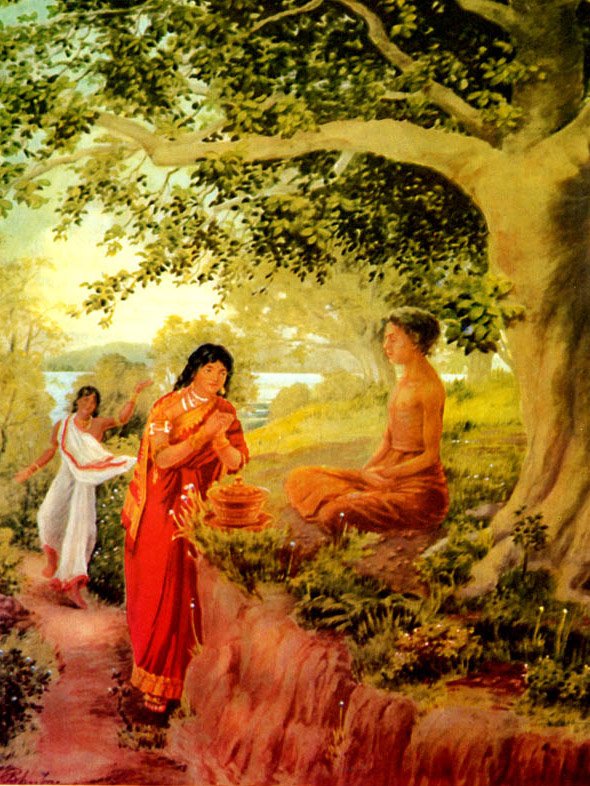Apadana commentary (Atthakatha)
by U Lu Pe Win | 216,848 words
This is the English translation of the commentary on the Apadana (Atthakatha), also known as the Visuddhajana-Vilasini. The Buddhist stories known as apadanas refer to biographies of Buddhas, Buddhist monks and nuns. They are found in the Pali Canon (Khuddaka Nikaya), which is the primary canon of Theravada Buddhism. Alternative titles: Visuddhaja...
Commentary on Biography of the thera Ekasaññaka
Stanzas starting with Khaṇḍo nāmāsināmena constitute the biography of the venerable thera Ekasaññaka. This one also, having done devoted service toward former Buddhas, accumulating meritorious deeds conducive towards escape from the rounds of repeated rebirths (vaṭṭa) in this and that existence, was reborn in a family-house at the time of the Glorious One Vipassī; on having attained to the age of intelligence, his mind came to be of pious faith in the three Gems, met the chief disciple of that Master, named Khaṇḍa who was wandering about for alms-food, and offered alms food to him with pious faith. On account of that act, he enjoyed divine and human bliss, was reborn in a family-house, at Sāvatthi, when this Buddha arose, listened to the preaching of dhamma by the Master, when he properly gained pious faith, renounced the world and became an arahat not long afterwards even. He became well-known as the thera Ekasaññaka, because of the fact that he properly gained distinction, having borne in his mind the impression of alms-food.
18. Subsequently, he recollected his own former deeds; became delighted and uttered a stanza starting with Khaṇḍo nāmāsināmena, in order to make manifest the deed done by him before. There, khaṇḍo (borken), because of having broken down the depravity (kilesa), of that thera, the chief disciple. The rest is but easy everywhere.
The Commentary on the biography of the thera Ekasaññaka has ended.
